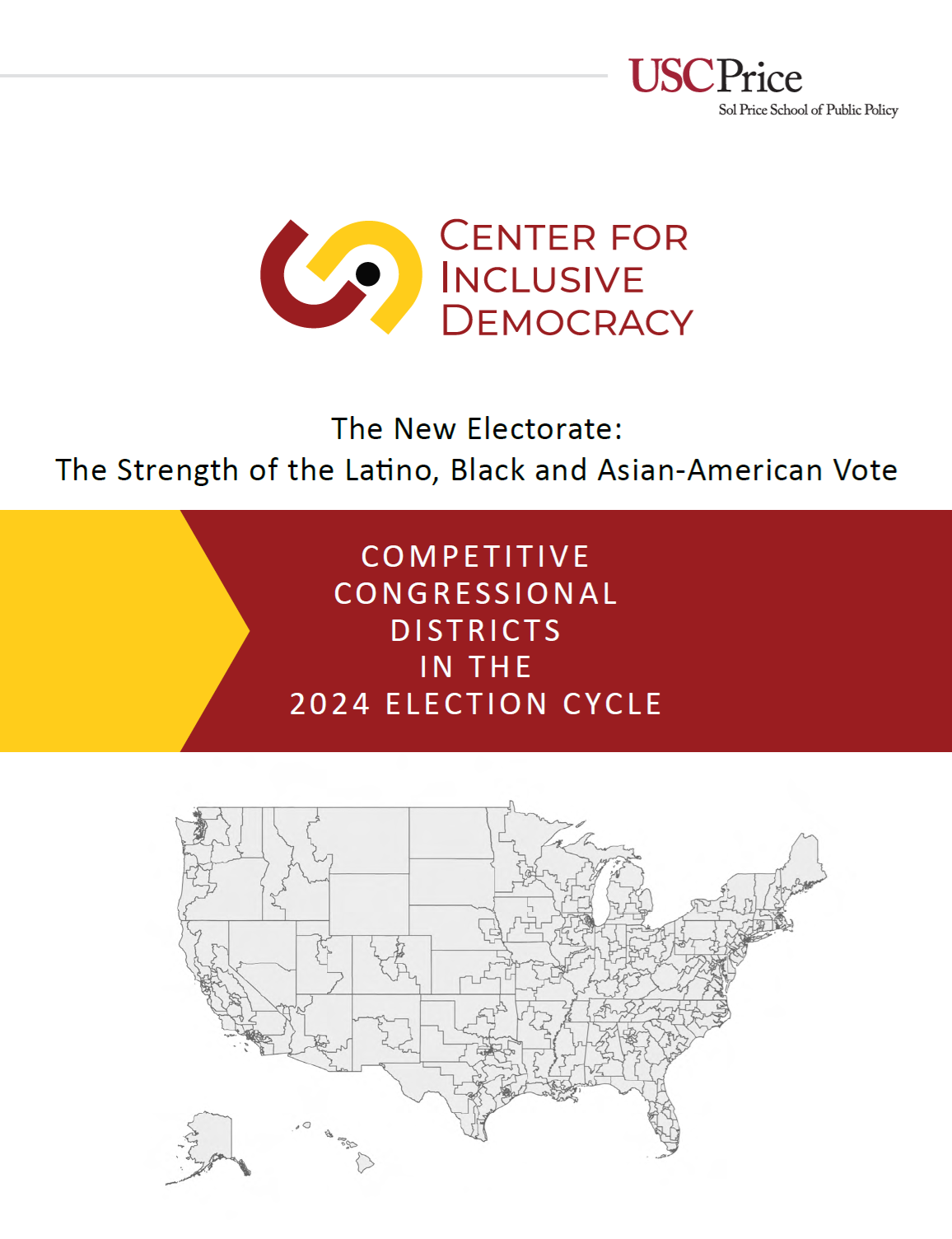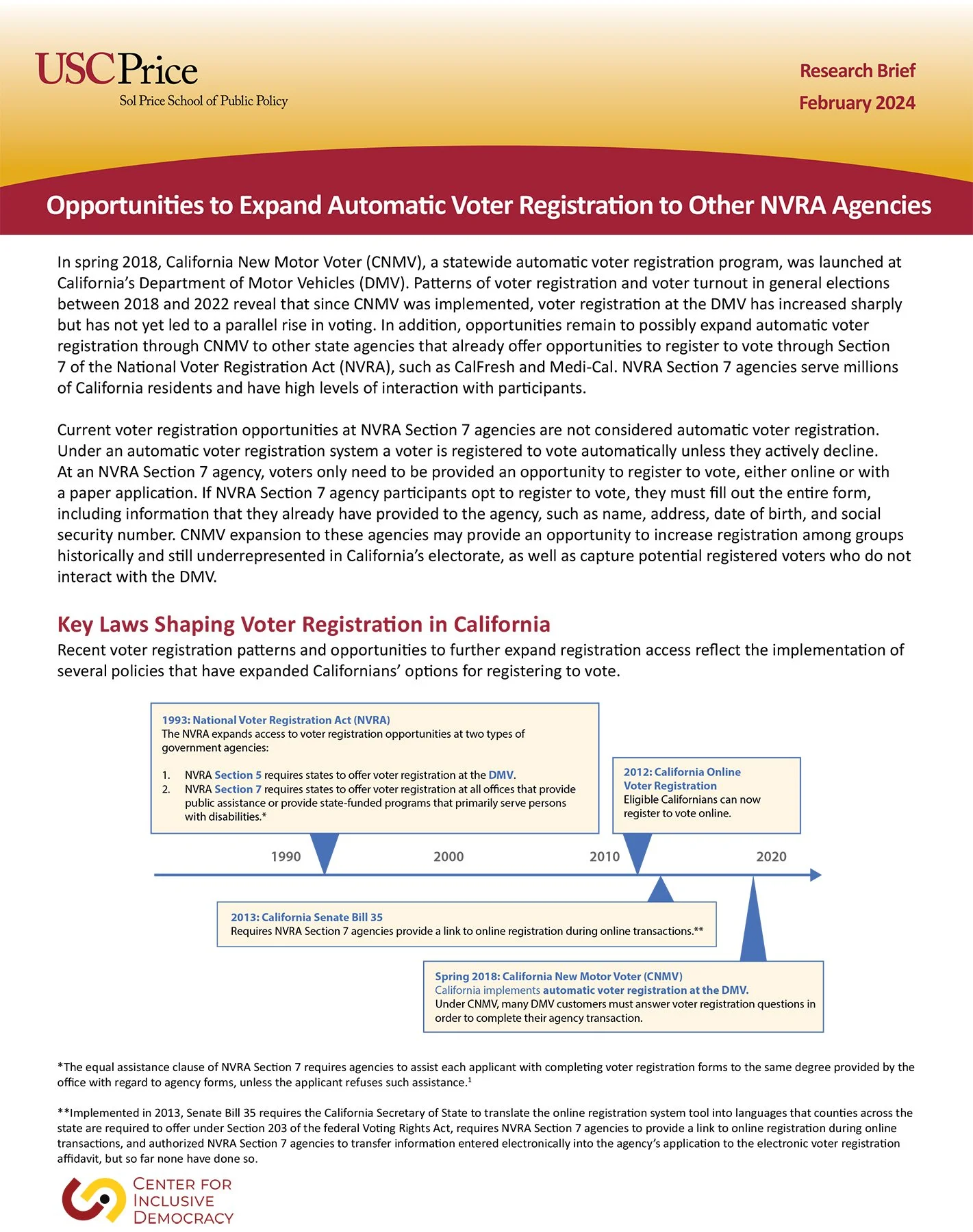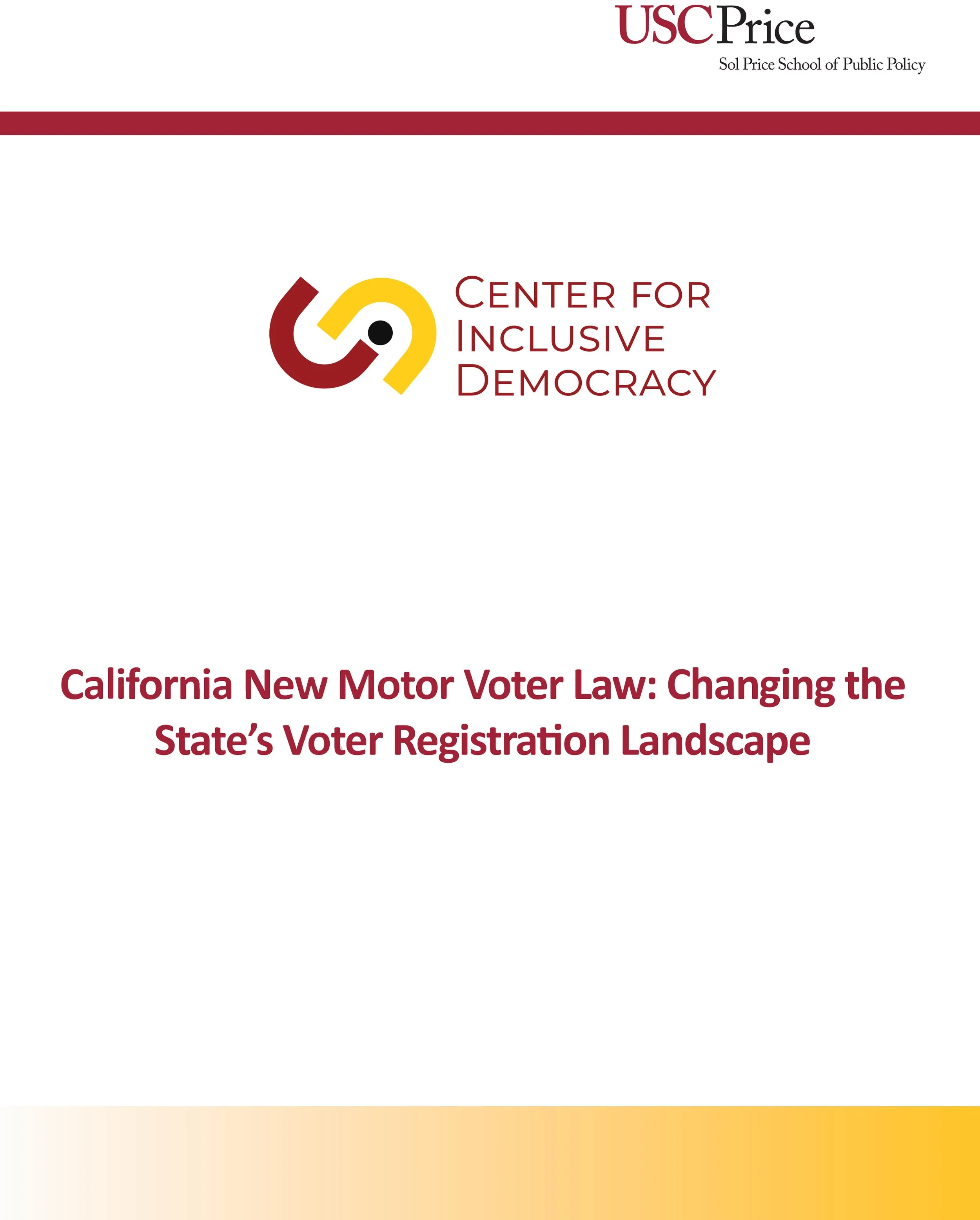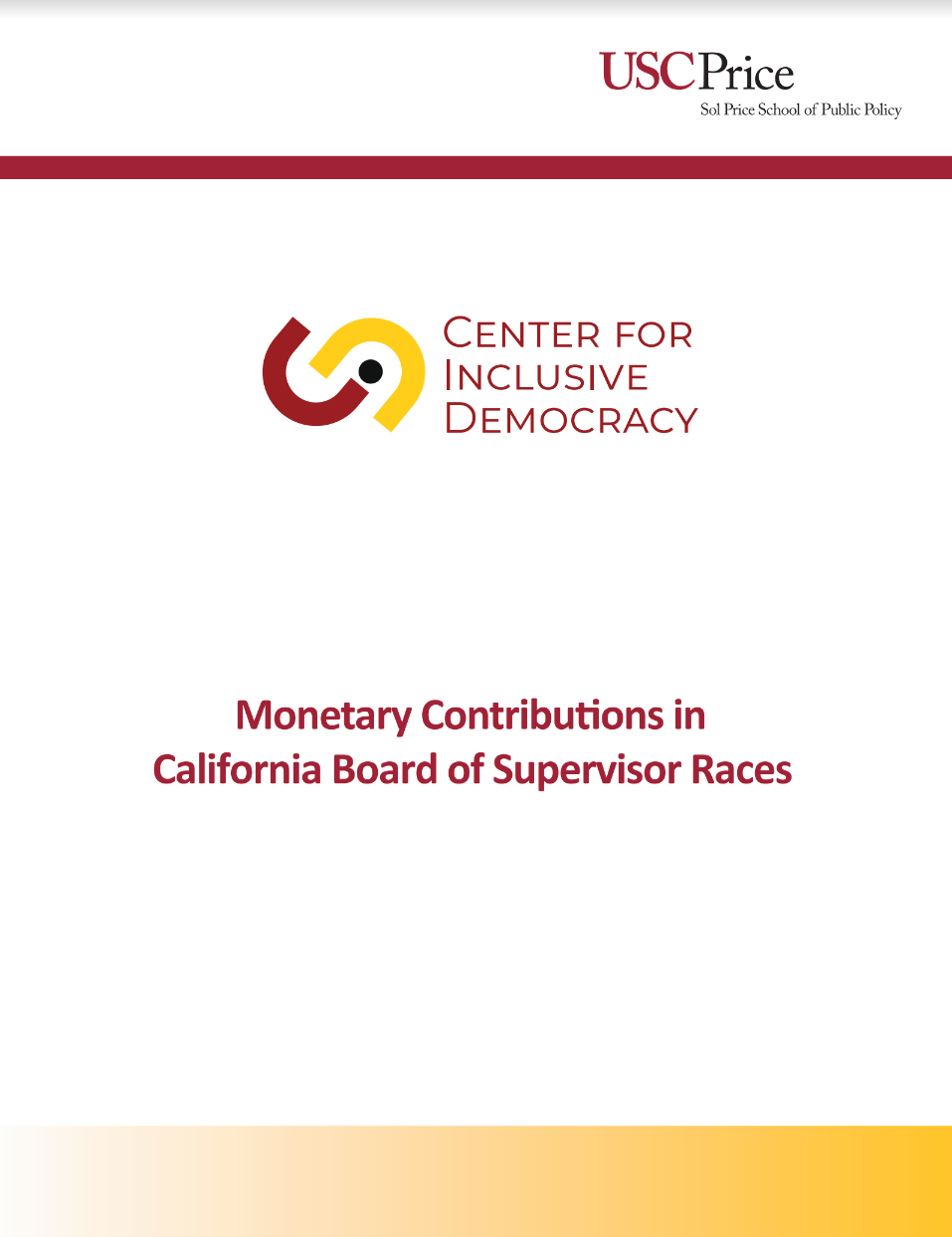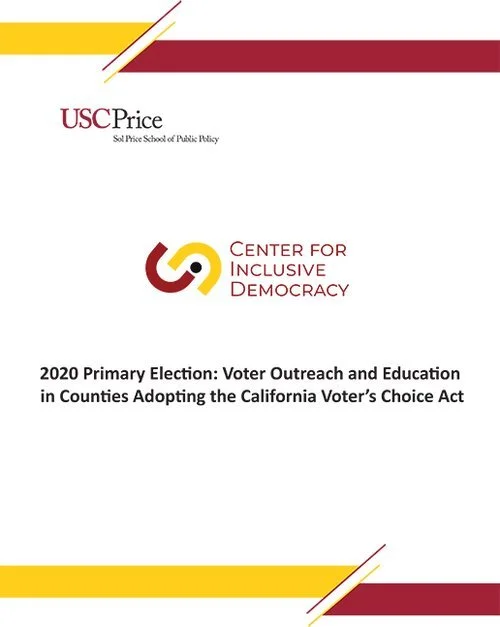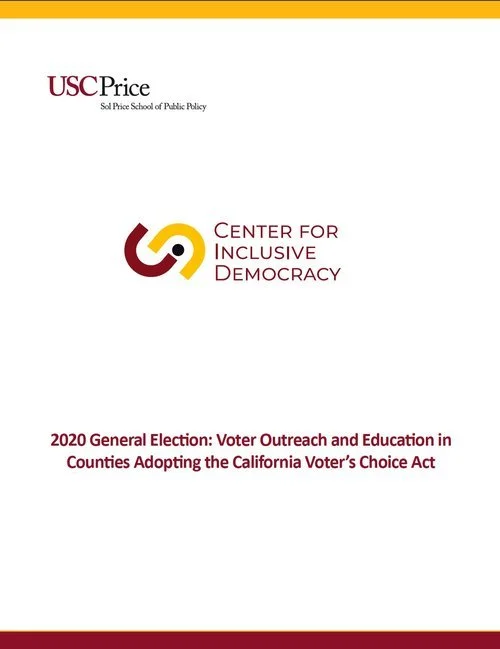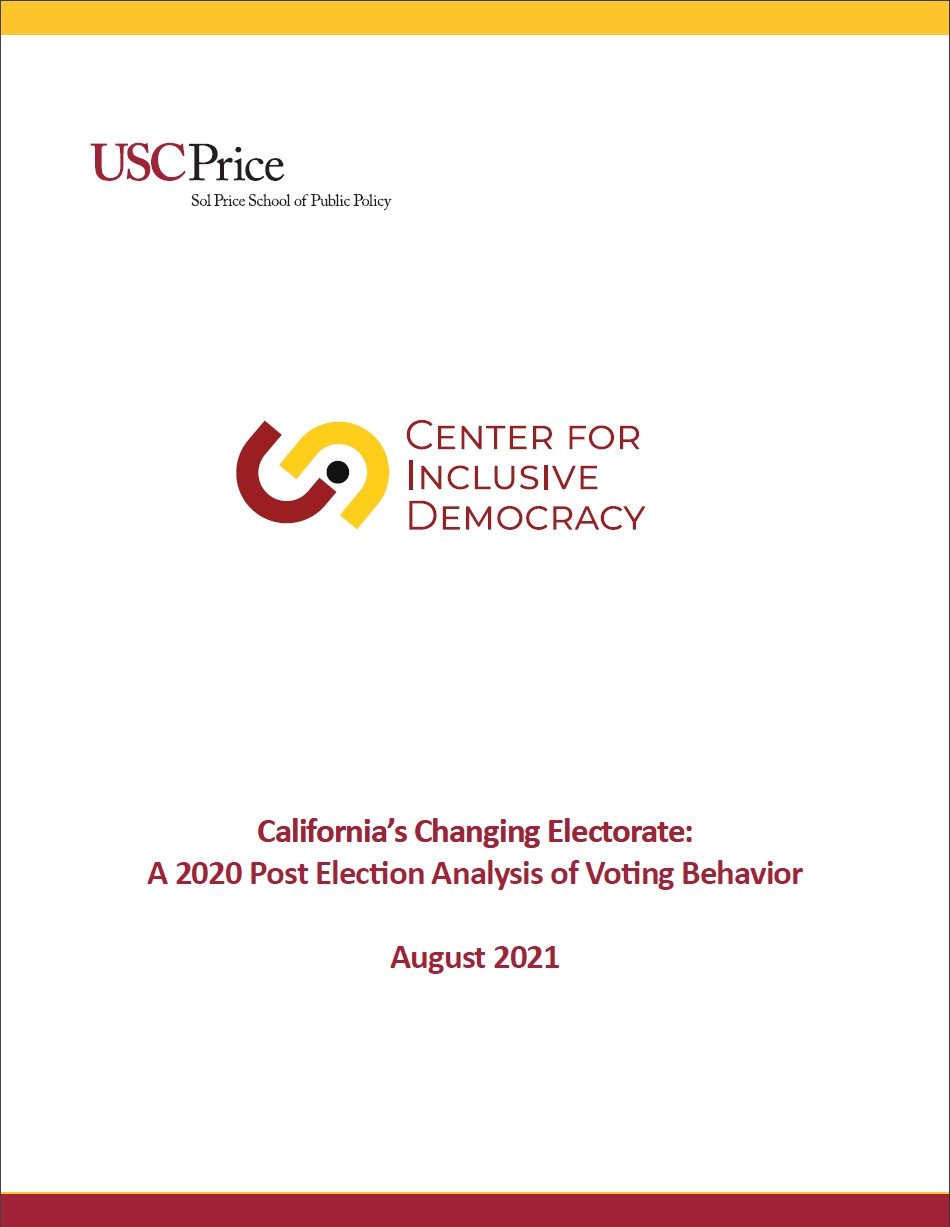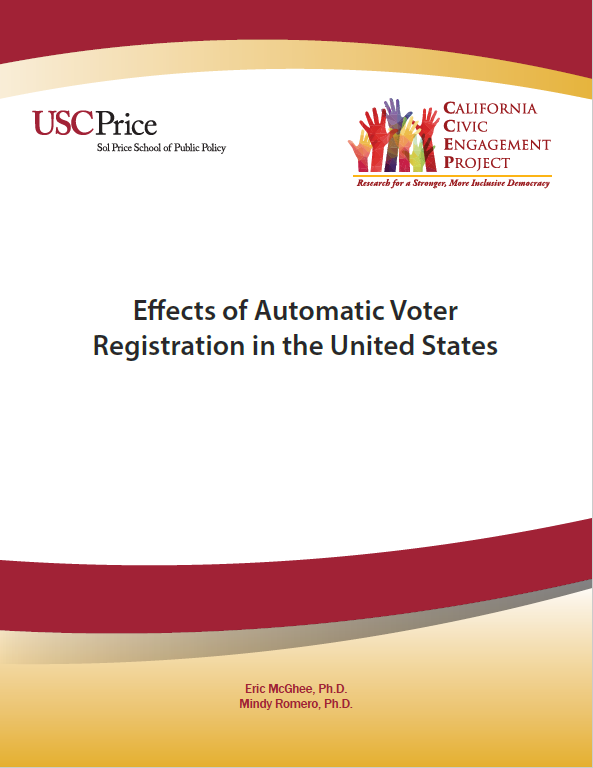CID Election Policy Research
The New Electorate: The Strength of the Latino, Black and Asian-American Vote
COMPETITIVE CONGRESSIONAL DISTRICTS IN THE 2024 ELECTION CYCLE
new release!
The Center for Inclusive Democracy at the USC Price School of Public Policy releases a new research report analyzing voter turnout in the 43 competitive U.S. congressional districts. The report found that in most of these districts, the number of eligible Asian-American, Black and Latino voters who did not vote in 2022 was greater than the margin of victory in many of those districts’ House races—and often by a significant amount.
Click here for the congressional district report.
Click here for the press release.
Click here for other reports in this series examining turnout in battleground states and at the national level.
Vote-by-Mail Ballot Tracking: A Multi-State Analysis of Voter Turnout and Rejection Rates
new release!
In response to the 2020 COVID-19 pandemic, vote-by-mail ballots were used by an unprecedented number of voters in the presidential election. In the same year, some states introduced or expanded the availability of a vote-by-mail ballot tracking tool to their voters. Two years after this expansion, the 2022 midterm election cycle continued to see large shares of voters in these states using vote-by-mail ballots. This report examines ballot tracking use in the 2022 general election in three states that adopted the tool - California, Colorado, and Georgia – to better understand who is using the tool, their preferences, and how their voting behaviors differ from those who don’t use the tool.
Click here for the report.
Click here for the press release.
VOTING METHODS IN CALIFORNIA: VOTER AWARENESS AND REASONS FOR DISPARATE USE
NEW RELEASE!
Currently, the overwhelming majority of Californians vote by returning their vote-by-mail ballot through the mail or by dropping off their ballot at a drop off box. However, use of voting options in the state varies by demographic group, including voting in-person, with Latinos and young voters using polling places and vote centers at higher rates than the general voting population.
Understanding the differential experiences that California voters have with available methods for casting ballots is essential to the development of effective public voter outreach and education strategies developed to increase participation in the state’s elections, including the upcoming November 2024 general election. To this aim, the USC Center for Inclusive Democracy (CID) conducted a statewide representative survey of eligible voters in California examining the information they have about their voting options, the reasons voters use a particular voting method in casting their ballot, and their voting preferences for the future.
Click here for the full report
Click here for the four-page highlight brief
Click here for report's appendix
Click here for the webinar recording and presentation slides
VOTING METHODS IN CALIFORNIA: DISPARATE USE AND REJECTION RATES
NEW RELEASE!
The ways in which Californians cast their votes has been changing over the past decade. In the 2020 general election, the first in which every registered voter in California automatically received a vote-by-mail ballot, vote-by-mail voting surged to over 87% of all votes cast. CID conducted a statewide analysis of voting methods in the 2022 general elections in order to understand if the voting behaviors seen in the 2020 general election amid the COVID-19 pandemic continued in the state.
Click here for the full report
Click here for the four-page highlight brief
Click here for report's appendix
Click here for the webinar recording and presentation slides
VOTER MESSAGING IN CALIFORNIA: CHALLENGES AND OPPORTUNITIES IN AN INEQUITABLE ELECTION LANDSCAPE
NEW RELEASE!
Understanding the barriers to voting that many Californians experience is essential to the development of effective public voter outreach and education strategies aimed at increasing participation in the state’s elections, including the November 2024 general election.
To inform the efforts of election officials, community groups, and others working to develop these strategies, this webinar presents new CID research findings on barriers to casting a ballot by California eligible voters, their knowledge and awareness of voting information, as well as the impact of different types of voting-related messages on their likelihood of casting a ballot.
Click here for full report
Click here for the three-page highlight brief
Click here for report's appendix
Click here for the webinar recording and presentation slides
CALIFORNIA'S BALLOT TRACKING SERVICE: WHO IS USING IT AND HOW DOES IT IMPACT VOTER CONFIDENCE AND BEHAVIOR?
NEW RELEASE!
Statewide ballot tracking was introduced to California voters in the 2020 election cycle. Available in all 58 counties, the BallotTrax tool sends updates via email, text, or voice message informing
registrants when their vote-by-mail ballot has been mailed to them, when it has been received by their county elections office, and the status of their ballot as it is processed.
This new report from the USC Center for Inclusive Democracy examines who signed up for BallotTrax to track their vote-by-mail ballot, what their voting behaviors are, and what their preferences are when signed up for BallotTrax . Findings improve the understanding of how BallotTrax may be influencing Californians’ interactions with the electoral process.
Click here for full research report
Click here for report's appendix
Click here for the two-page highlight brief
Click here for the webinar recording and presentation slides
Opportunities to Expand Automatic Voter Registration to Other NVRA Agencies
California New Motor Voter Law: Changing the State’s Voter Registration Landscape
Monetary Contributions in California Board of Supervisor Races
California’s Formerly Incarcerated: Challenges and Opportunities in Accessing Voting Rights
the experience of black voters in california: 2020 general election and beyond
2020 PRIMARY ELECTION - VOTER OUTREACH AND EDUCATION IN COUNTIES ADOPTING THE CALIFORNIA VOTER’S CHOICE ACT
2020 GENERAL ELECTION VOTER OUTREACH AND EDUCATION IN COUNTIES ADOPTING THE CALIFORNIA VOTER’S CHOICE ACT
VOTER REGISTRATION IN CALIFORNIA 2020 GENERAL ELECTION
Click here for the full report
Click here for report’s online appendices of data charts and tables


